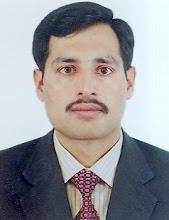
Nutrition and SupplementsAvoid crash diets. They stress the body and the effects appear in all the body’s systems. Remember that hair is nothing more than a-keratin protein (90% with the remaining 10% being water.) A low protein diet can cause the hair to thin and will certainly slow its growth.
If you are in a phase of actively trying to grow out your hair, you may want to supplement your protein intake with liver. Some nutritional experts also recommend brewer’s yeast, wheat germ, and granulated lecithin to help your body process the protein. Visit your local health food store and ask to speak to a counselor who will help you make good choices about diet and the use of supplements. When you are trying to grow hair, vitamins help.
In fact, thanks to the poor quality of the modern diet, everyone can benefit from a daily multi-vitamin, mineral supplement. The B and E vitamins are good for your hair as are zinc, sulfur, and magnesium. Also make sure your multi-vitamin includes biotin. To get more B vitamins from your diet, eat beans, peas, carrots, cauliflower, soybeans, bran, nuts, and eggs. Avocados, nuts, seeds, and olive oil contain the E vitamins.
Avoid foods that are greasy and fatty. They will disrupt your digestive system and potentially make your scalp and hair more oily. Minimize your intake of salt as it will raise your blood pressure and affect blood circulation in your scalp. (Male pattern baldness has been linked to high blood pressure.) Avoid pre-processed foods that are full of chemical additives and fast foods. A well-balanced diet with plenty of fruits and vegetables that is also high in protein is your best ally in your quest to grow long, beautiful hair.BrushingThe physical stresses on your hair are also an important consideration. Only use brushes with natural boar bristles and choose wide-toothed combs. Both are good at distributing the natural oils in your skin from the scalp down to the ends of your hair.
Throughout the day use your comb to prevent tangles in your hair. If tangles do occur, work at them in small sections starting at the end of the hair and working your way up. Never back comb or tease your hair. Always work in downward, even strokes. If a tiny knot simply will not work out, it is best to cut it out.
Before you shampoo, comb or brush your hair to remove loose hairs and to straighten out tangles. If your hair has a tendency to be dry, the old tried and true daily brushing with one hundred strokes will help as it is a technique to distribute oils from your scalp down the length of your hair.Split EndsWith long hair, damage travels up from the ends. Trim your hair often. If you have reached the desired length and are in a maintenance stage, take off half an inch a month. If you are still growing your hair out, remove half an inch every three or four months.
In between those major trims, sit in a bright light and examine your hair for split ends. (When a split end develops, the hair literally unravels and will look frizzy.) Use just the tips of sharp scissors to remove the damaged end of the individual hair. Hair with this kind of damage breaks easily and much more length will be lost in that fashion than in simply monitoring and snipping your split ends.Stresses to the HairThe natural tossing and turning of sleep will create damaging friction against your hair if you sleep with it down. Use a satin pillow case and put your hair in a loose braid or in a soft sleep cap.
Heated appliances like blow dryers, hot rollers, curling irons, flat irons, and crimpers are strictly forbidden. No steaming hot showers and no vigorous rubbing of your hair with a towel. All of these things place major stress and friction on your hair. The heated items will dry out your hair and make it more brittle and in some instance place physical stress on the hair shafts by altering their shape. The same is true of overly hot water while shampooing and of the friction caused by vigorous rubbing with a towel.
Consideration should also be given as to the wisdom of using hair fasteners. Never use rubber bands because they tear at the hair when removed and damage the outer cuticle layer which makes the hair more susceptible to tangling. Anything with rough or sharp edges and hinges in which the hair can become caught is a bad idea as are items with Velcro and springs. Soft scrunchies and chopstick-like “hair sticks” are much better choices.
Avoid tight braids and pony tails. When you pull your hair to achieve these styles you are placing stress at the roots that are already bearing the weight of your long hair. Anything you do that causes hair to fall out or to be pulled out should be stopped immediately and not repeated. Check out more expert tips to grow long hair in the next part of this article.
source: fun345.com








